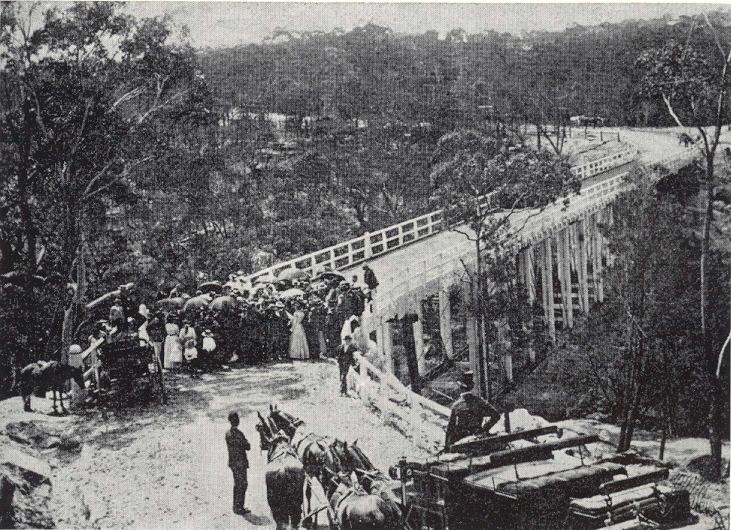Replaces 1st De Burghs Bridge Opened December 1967 | No. of lanes 3 (north; 3 (south) Locale Macquarie Park | |
 | ||
Address E 5, Macquarie Park WA 2113, Australia Hours Open today · Open 24 hoursSundayOpen 24 hoursMondayOpen 24 hoursTuesdayOpen 24 hoursWednesdayOpen 24 hoursThursdayOpen 24 hoursFridayOpen 24 hoursSaturdayOpen 24 hours Similar Fullers Bridge, Macquarie Culvert, Endeavour Bridge, Fig Tree Bridge, Tarban Creek Bridge | ||
Fullers bridge to de burghs bridge loop
The De Burghs Bridge crosses the Lane Cove River in Sydney, Australia. It carries Lane Cove Road, part of the A3, from Macquarie Park in the south to West Pymble in the North.
Contents
History
The current De Burghs Bridge is the second bridge to cross the Lane Cove River in this area.
First bridge
The first bridge, also called De Burghs Bridge, was designed By Ernest Macartney de Burgh, for whom the bridge is named, in 1899. It opened on 23 February 1901. It was situated downstream from the current bridge, within metres at the southern end, and about 20 metres away from the current bridge at the northern end. The bridge was 300 feet (91 m) in length, with a single De Burgh timber truss which, at 165 feet (50 m), was the longest timber truss span ever built in Australia.
The old bridge was destroyed by bushfire in January 1994. The northern abutment on the ground is still visible, as are parts of the supporting piers. The new bridge offers a vantage point to view the remnants of the original structure.
Second bridge
The bridge was replaced by a large concrete bridge, the current bridge, and it opened in December 1967. The current bridge is a six lane high level bridge that, unlike the original timber truss, is perpendicular to the river. This demonstrates how far road and bridge building had progressed by the 1960s, as previously it was dictated by the form of the land. One can see how the newer road and bridge is built right over any land formations, in contrast to the winding old road. The current bridge is actually two separate bridges built alongside each other.
De Burghs Bridge is similar in form and function to Roseville Bridge, being a high-level multi-lane bridge replacing a low level, narrow bridge as well as windy approach roads.
Today
De Burghs bridge is an important part of a significant North-South artery which is the next road between the Northern Suburbs and the lower Northern Suburbs after Pennant Hills Road. The bridge carries three lanes of traffic each way and a pedestrian walkway on either side of the bridge. A plaque placed on the bridge pays tribute to the old bridge. It was placed there in 1988 before the destruction of the old bridge.
